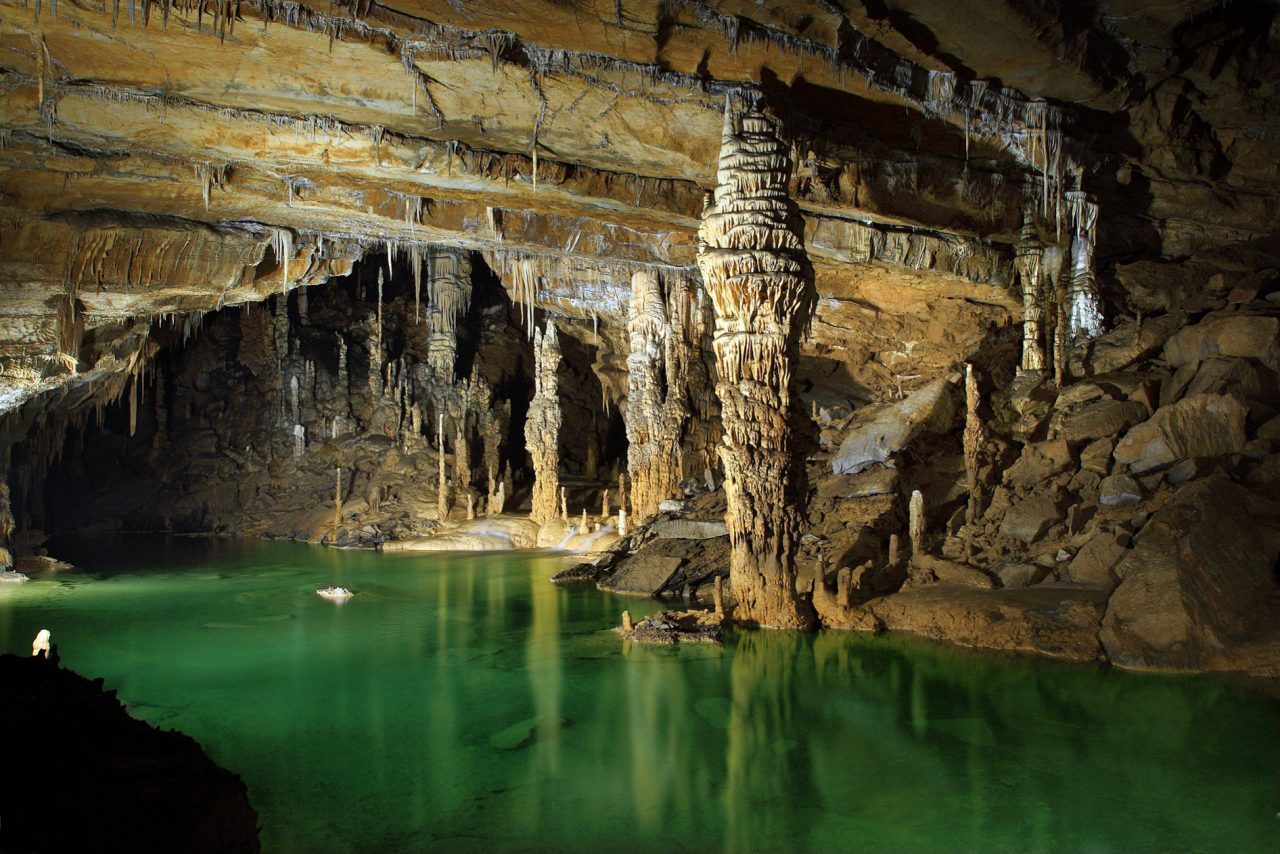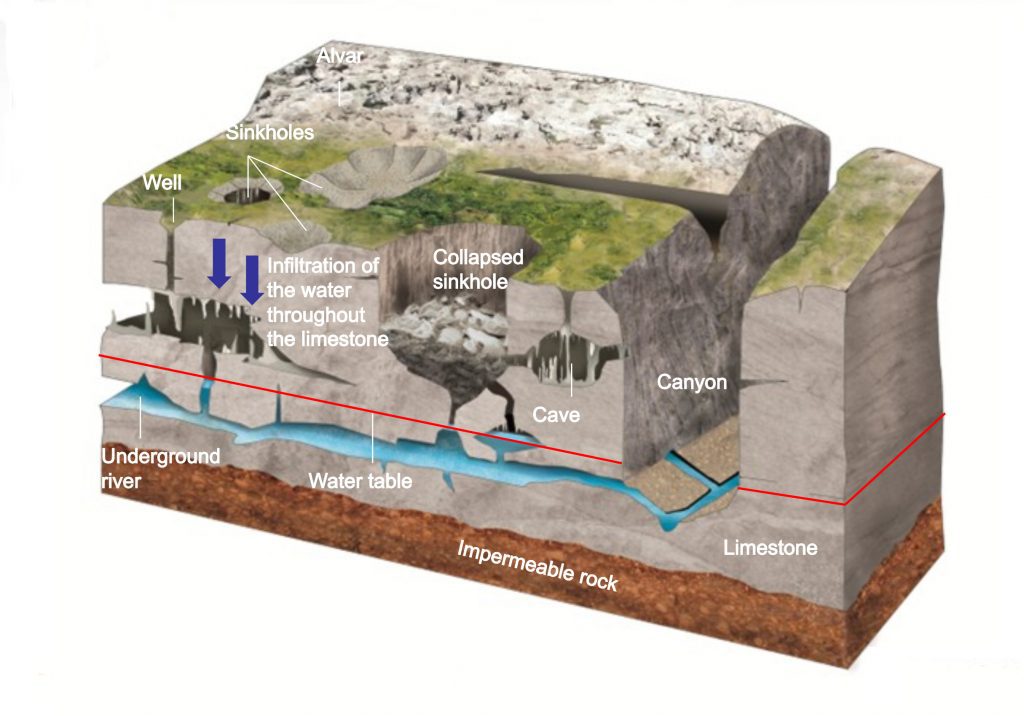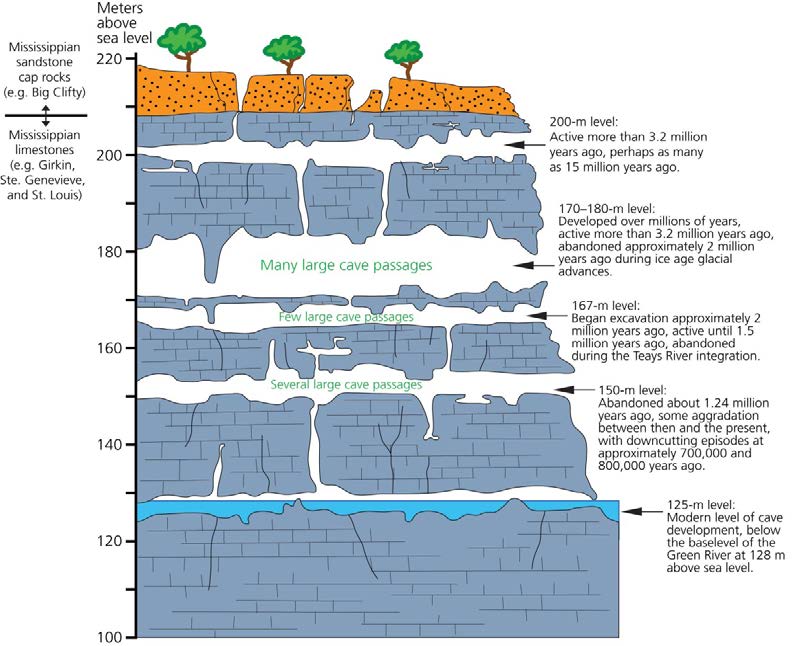
Cave systems have a natural ability to filter water while providing vapor exchange – an incredible asset as a building material.

Mysterious, Mammoth Cave
Mammoth Cave is the most extensive cave system on Earth with over 365 miles of discovered passageways. Some geologists believe that there could be an additional 600 miles of undiscovered passageways in existence.
This internationally protected biosphere reserve holds one of the world’s most diverse ecosystems that about 130 different life forms depend on.
What is most intriguing about Mammoth Cave is the ability of how this beautiful treasure can sustain life in the depths of its mysterious core.

Mammoth Cave is an extremely biodynamic system.
I compared this natural phenomenon to human anatomy, where plants and trees function like the pores of our skin and hair follicles.
Entering Mammoth Cave is like entering a layer of the earth’s skin. What I discovered immediately is that life below the entire cave system is dependent on the ability of a highly permeable outer layer. Subterranean life would not exist without it.
Further into its core, the life blood of Mammoth Cave, is its vast network of rivers and streams which begin by a complex filtration process where rain water passes through many sedimentary layers of dirt, sand, clay and other forms of sedimentary stone – and eventually towards limestone.
Understanding the Nature of Limestone
Limestone (or Lime as a building material) is the remains of biological marine life from ancient oceans over millions of years ago. These once biological entities have been compressed and solidified as limestone by the earths ever-changing biodynamics.

The remains of ancient sea creatures are a compacted composition of micro-crystal calcium deposits that permeate by water vapor transmission, in turn, mitigating against water stagnation. The porous, highly breathable nature of this limestone functions in a lot of ways like the bones in our own bodies – strong, yet capable of blood flow.
In the case of Mammoth cave, limestone’s critical role is removing layers of contaminants during the gravitational flow of water from the cave’s outer core to its inner core by natural filtration. As it reaches further into the depths of the cave system –the calcium-rich limestone provides an interior water source that is purified by natural gravitational process.
The crystal clear, emerald green rivers and streams throughout the Mammoth Cave biodynamical system are the life-blood of its vast biodiversity.

When we look at natural phenomena such as Mammoth Cave, it makes one wonder how life can sustain itself so impressively.
Limestone allows environments such as Mammoth Cave to exist today because of its natural ability to filter water while providing vapor exchange – in turn providing and preserving life.
This is an incredible asset as a building material, and why lime should be considered for truly sustainable building construction.
In essence – Mammoth Cave provides the feeling of temperature stability. This exists through both summer and winter conditions. In the built environment lime-built structures could do the same.
Mammoth Cave: A Model to Build

Lime is a life-cycled natural resource and a very important building material that can be used by mimicking nature that can preserve structures through time. With lime as a building material we can design and build truly sustainable structures that can perform in all environments and climate conditions. The material has been proven in our cultural heritage for thousands of years.
This understanding should allow for the advancement of further research to develop innovative product solutions for our new build environment.